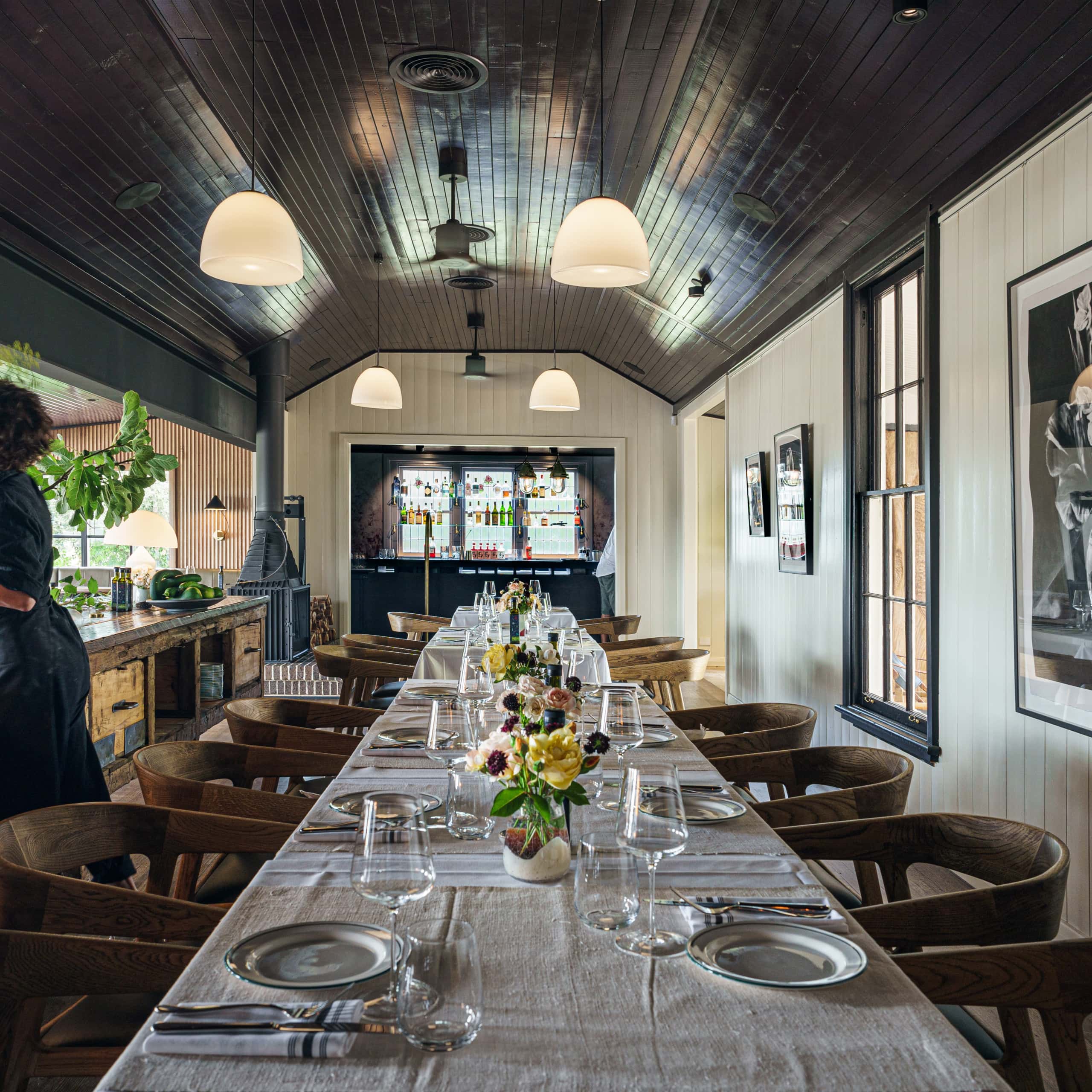The winners of this year’s Eat Drink Design Awards have been revealed, and – in a year that has been incredibly turbulent and uncertain for the hospitality industry – the celebration of these spaces seems more important than ever. In addition, the challenges of this period have themselves greatly affected the emerging designs of restaurants, bars, cafes, hotels, temporary venues, and retail spaces. These awards have therefore focused on recognising the spaces that bring comfort, delight, a sense of place, community, and communion.
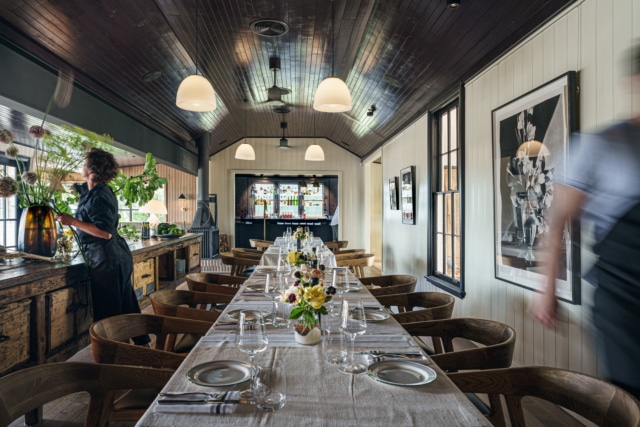
Cassie Hansen, editor of Artichoke and Eat Drink Design Award jury chair, says; “From a natural wine room in Adelaide, reminiscent of a classic European bar, to an Art Deco style hotel exuding old-world elegance, this year’s award winners evoked a nostalgia for the past. Pining for the days when we could visit our favourite restaurants, cafes, and bars, the jury was drawn to venues with sentimentality and tradition at their core, but executed in a contemporary way.”
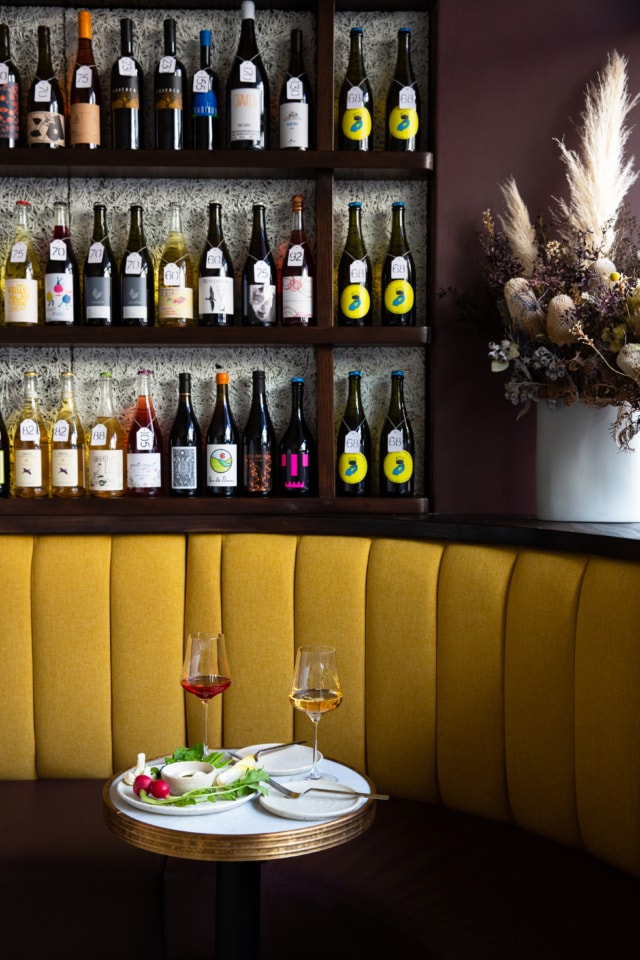
This push for spaces that are comforting and familiar has resulted in many of the winning designs featuring historic venues that have been reimagined to suit contemporary dining needs. Some of the most successful entries also focused on bold colour, playful touches, and unique materiality. In addition, the shift away from spaces with views and expansive vistas allowed for the prioritisation of an “inward focus”, and brought the jury’s attention to the food and overall dining experience.
Best Bar Design: Leigh Street Wine Room by Studio Gram (Adelaide, SA)
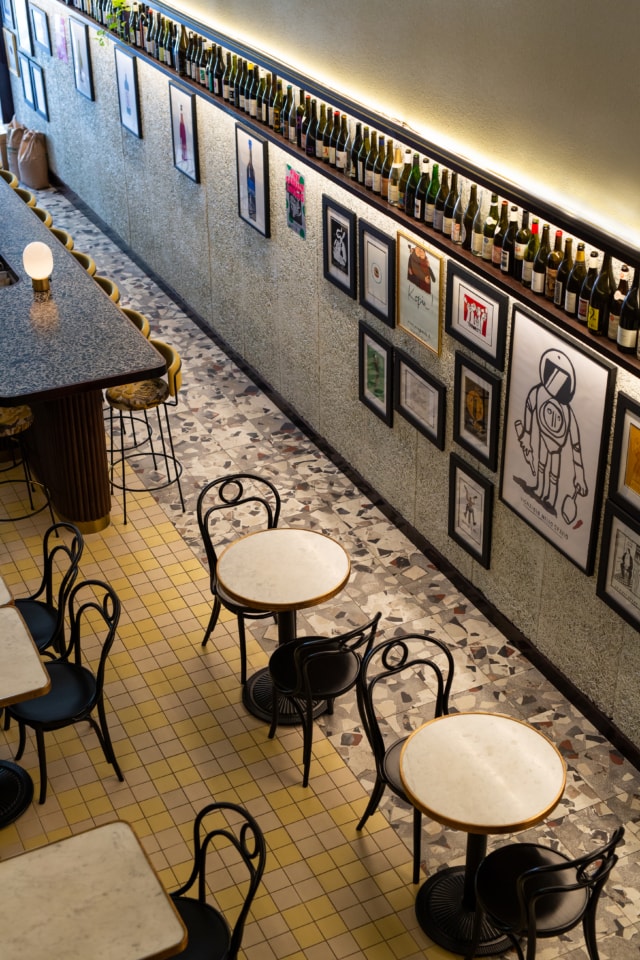
With its timeless European style, Leigh Street Wine Room on Adelaide’s most happening eat street feels like a classic already, according to the jury. Built on the site of a former dry cleaning business (the original signage remains intact), the ultra-narrow footprint has been artfully overhauled by local firm Studio Gram on an impressively compact budget.
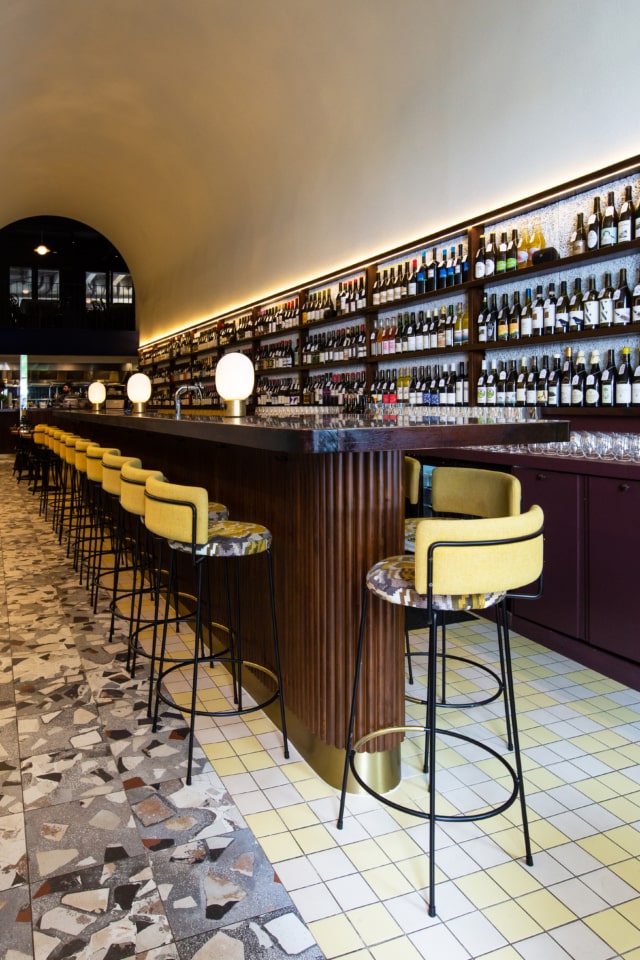
The jury admire the clever design for creating a cosy room that has an immediately welcoming vibe, and cocoons its customers with feelings of warmth and intimacy. A dazzling vaulted archway integrates a mezzanine level over the terrazzo bar, while a library of more than 400 bottles of minimal-intervention wine fills an entire wall, showcasing what this place does best.
Best Restaurant Design: (Joint Winner) Poly by Anthony Gill Architects (Surry Hills, NSW)
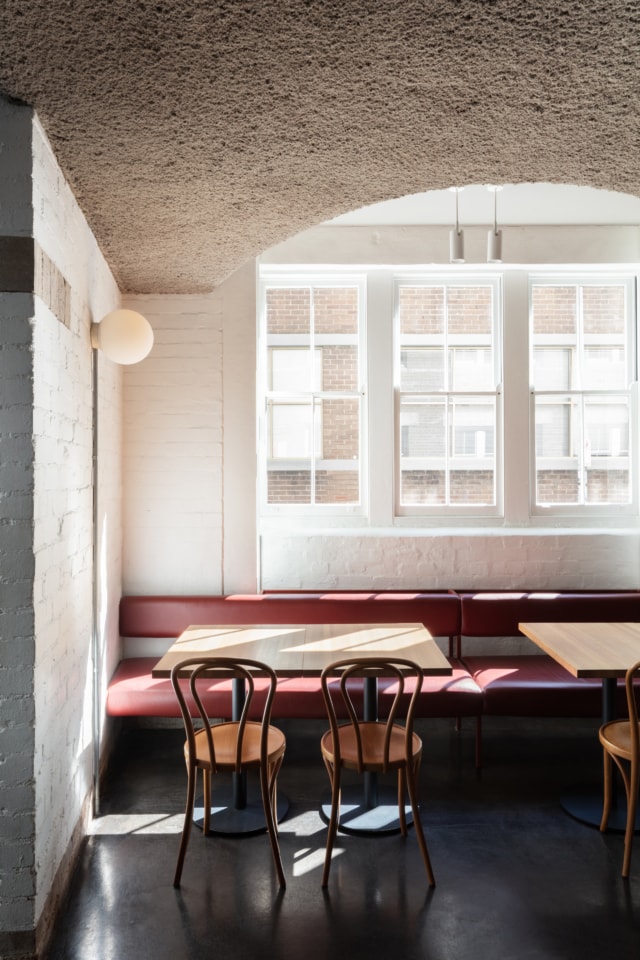
Hotel restaurants can sometimes be an afterthought, but Mat Lindsay’s austerely chic Poly, in the basement of the Paramount House Hotel in Sydney’s Surry Hills, stands apart as a destination in its own right. Located on a semi-subterranean inner-city corner, the fitout responds intelligently to a difficult site. Featuring a sweeping bar and a daringly exposed open kitchen, the jury appreciate the restraint and timelessness of this design.
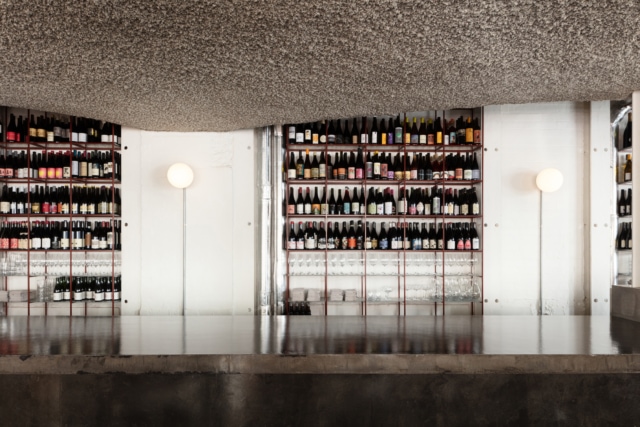
Communal tables, exposed utilities, raw brick and polished concrete make for a sparse, industrial, yet absolutely on-the-pulse spot to dine. The layering of these textures – and the unconventional “popcorn” ceiling – establish mood and interest. The jury adore the way in which this vision from Anthony Gill Architects is beautifully resolved and elegant in its simplicity.
Best Restaurant Design: (Joint Winner) Osteria Tedesca by Cox Architecture (Red Hill, VIC)
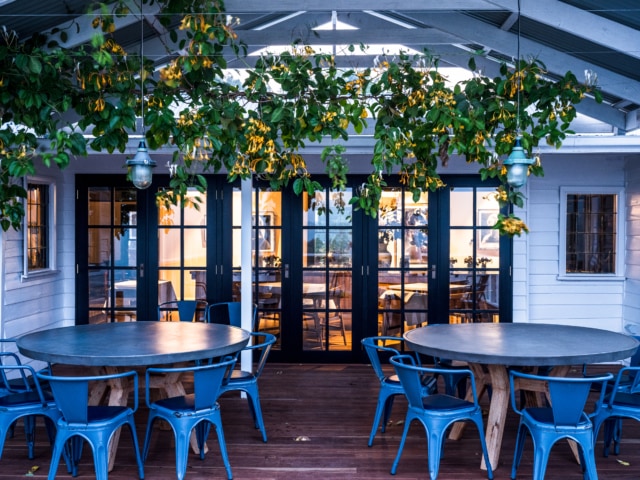
This deeply personal labour of love for chef Brigitte Hafner winningly captures the warmth and relaxed hospitality of a domestic kitchen. The jury commended the immersive open-plan space in Victoria’s Red Hill wine region, which encourages guests to engage in the experience as if they were in their own homes. Hafner’s blackened cooking staton – loosely based on a carpenter’s workbench – sits in front of a woodfired brick hearth, where she presents a new menu each day based on seasonal produce sourced from the property.
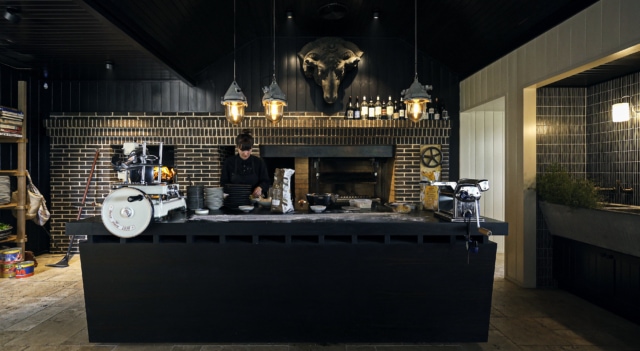
The original building, set amid a spectacular rural landscape, has been sensitively modernised by Hafner’s partner, architect Patrick Ness of Cox Architecture, and provides a complete, holistic escape from a busy world. The remarkably unfussy, functional design facilitates a focus on sustainability and longevity at every level.
Best Café Design: There Cafe by Ewert Leaf (Footscray, VIC)
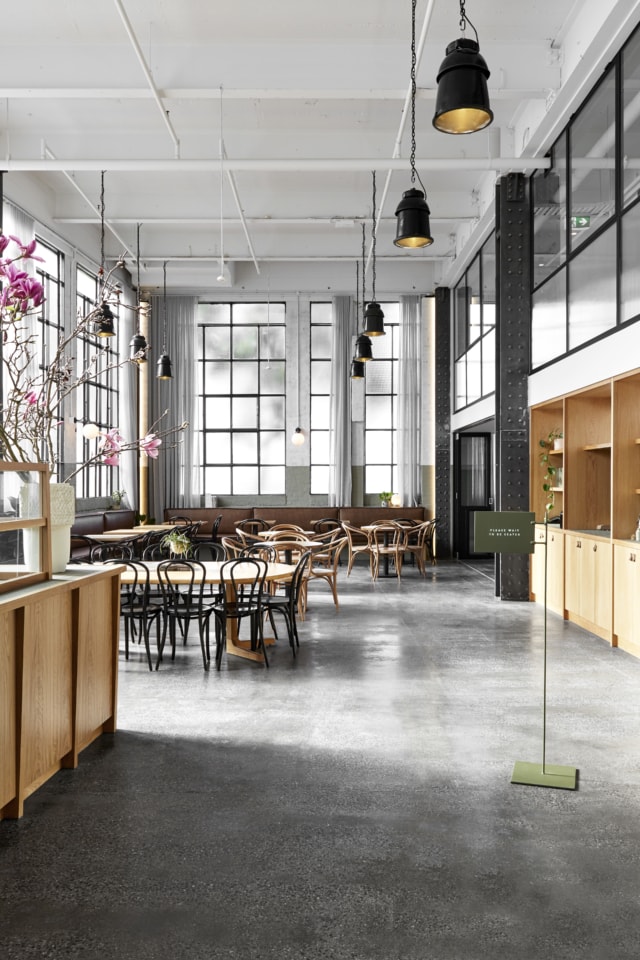
Housed in a 19th century wool store that was previously known as the longtime headquarters of book publisher Lonely Planet in Melbourne’s Footscray, There Café makes dramatic yet sensitive use of its heritage location. Executed with impressive restraint by Ewert Leaf, the jury love this buzzing, inner-west meeting spot.
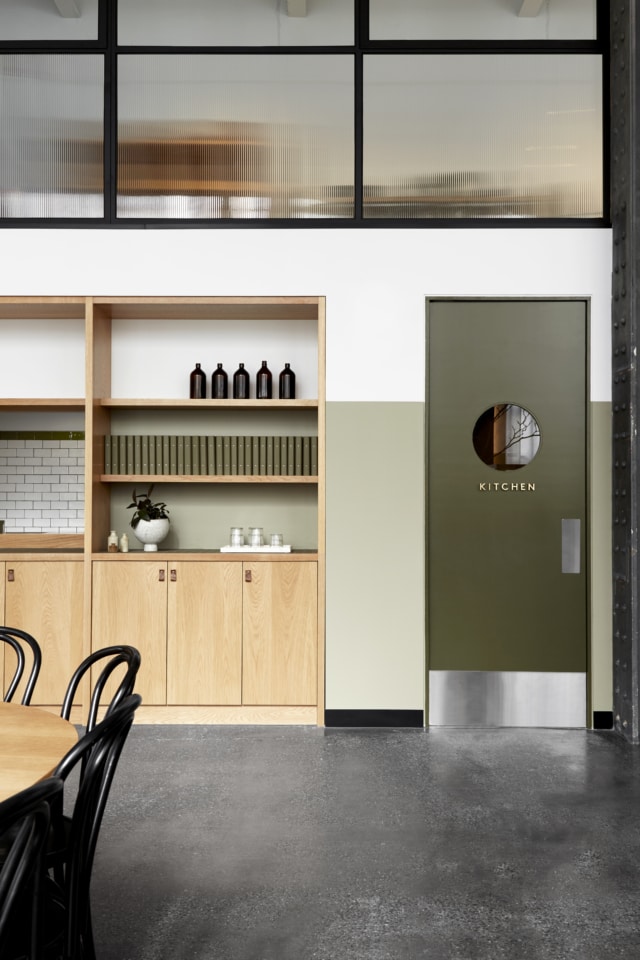
Premium finishes share a subtle, uniform colour palette, with steel beams, leather banquettes, polished concrete and industrial light fittings accentuating the soaring, almost floor-to-ceiling windows that draw in waves of natural light. The softness of the design plays off the grandness of the original building, and the jury love the way in which rich textures and discoverable layers feel natural, giving an easy sensibility and sophistication to the venue.

Australia’s best restaurant design 2020: Nostalgia takes centre stage

Best bars 2020: Australia’s latest design-led spaces

